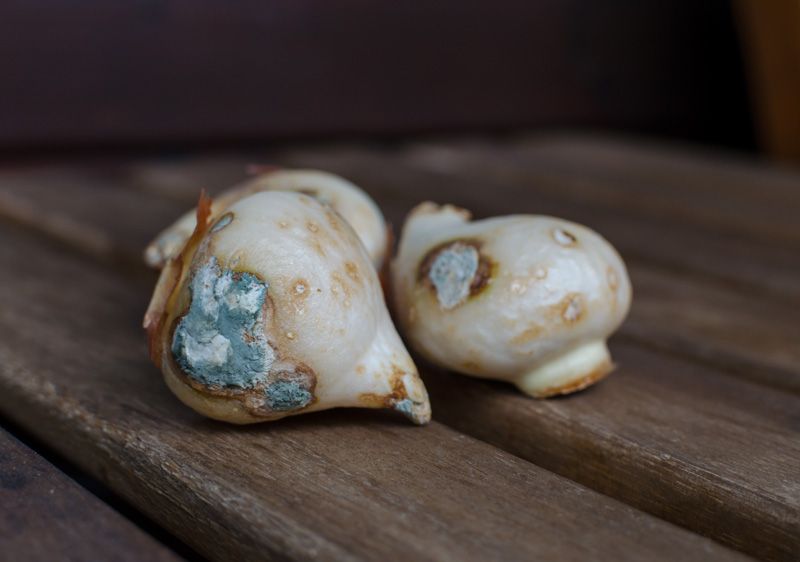
Bulb Blue Mold – Penicillium bulb mold – Penicillium hirsutum – Penicillium tulipae
Bulb blue mold
Common name
Bulb blue mold
Penicillium bulb mold
Causal agent
Bulb blue mold is a fungal disease caused by various penicillium species. The fungi mostly attack injured bulbs or those that are already weakened by another disease.
Scientific name
Penicillium hirsutum
Penicillium tulipae
Symptoms & Signs
Bulb blue mold disease first appears as brown spots on the bulb. The brown spots develop into a blue moldy growth that extends to basal roots and scales. It causes discoloration and stunted growth of the leaves as well as malformation of the bulbs. Depending on the plant, the tulip bulbs turn hard and dry, while the lily bulbs become soft and mushy.
Transmission
Penicillium is a soil fungus that enters healthy bulbs through openings such as wounds and damaged tissues. The fungi produce spores that may travel to other healthy plants by means of wind, water, or insects. High humidity between the temperatures of 70 F to 77 F favors the spread of disease.
Time of concern
Early spring to late summer
Common hosts
Tulips
Lily
Daffodils
